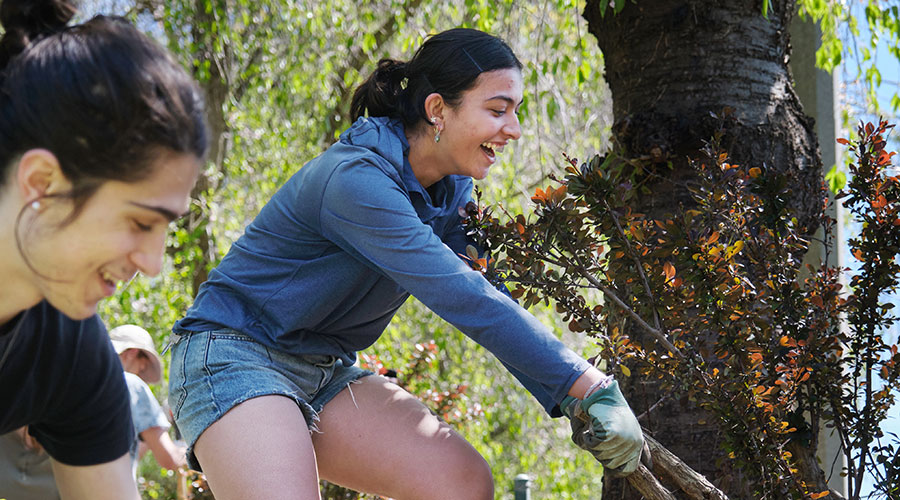Landscape Course Encourages Students to Reenvision the Whitman Campus
By Debbie Ritenour

The Whitman College campus is known for its towering trees, lush lawns and winding waterways. While the overall aesthetic is undeniably beautiful, the landscaping does not purposely incorporate native plants or reflect the cultural heritage of the Indigenous peoples who have called the region home for thousands of years.
Biology and Hispanic Studies double major Quinn Miller ’24 hopes to change that.
Working with Heidi Dobson, the Spencer F. Baird Professor of Biology, and Amy Molitor, Senior Lecturer of Environmental Studies, in an independent study, Miller designed a course that would allow students to not only learn about landscapes holistically, but also develop projects for specific locations on the Whitman campus. Dobson and Molitor co-taught the course that Miller designed, Campus Landscape: A Living Laboratory, in Spring 2024.
“I was excited to create a course that could change what our landscape looks like,” Miller says. “I knew this was a class that I would want to take and my friends would want to take.”
Learning With Others
The two-credit course consisted of a one-hour lecture and a three-hour lab. The lectures covered everything from plant ecology to the interactions between landscape and culture. Students also discussed the care and maintenance of native plants.
During the lab portion of the class, students worked in pairs to design and plan landscaping projects that would help increase sustainability, inclusion, education and outreach on campus. Project ideas included creating a First Foods garden that would grow the traditional foods of the local tribes; improving the landscaping of off-campus houses to increase shade cover; establishing a rain garden in front of Penrose Library; and creating a meditation garden by the Counseling Center.
Students also met with Whitman alumni from the Walla Walla County Conservation District to learn about vegetation restoration, spent extensive time with botanists from the Confederated Tribes of the Umatilla Indian Reservation (CTUIR), and visited the CTUIR’s native plant nursery.
Hands in the Dirt
While their lab projects were only conceptual, students were able to engage in hands-on learning when they removed English ivy from the entrance to the amphitheater on Earth Day. Ideally, the invasive plant would be replaced with native shrubs such as mock orange and golden currant and low-growing native perennials such as penstemon, buckwheat, blanketflower, milkweed and bee balm.
“We’re hoping to work with a professional landscaper from the CTUIR on a design for that area, but that’s going to be a multiyear project,” Dobson says. “It’s not something that can be done right away.”
At the end of the semester, students presented their projects to the class. They also created posters that were hung in Maxey West to share with the wider campus community.
“I hope the students came away with a new approach to looking at their surroundings and thinking about how they interact with their surroundings,” Miller says. “I also hope they feel like they have a voice in determining how this place that is their home for four years looks so that everyone feels welcomed and safe.”